For this critical play, I played the mystery game Tangle Tower. It was developed and published by SFB Games, available on iOS, Nintendo Switch, and PC platforms like Steam. I played the game on IOS, and it provides a highly interactive and accessible experience, where the game’s detailed puzzles and vibrant visuals are directly manipulated through screen touch controls. The game targets players who enjoy puzzle games and mysteries, appealing broadly to those who appreciate detailed artwork, storytelling, and complex characters. Its design is suitable for a wide range of ages, attracting both young adults and older players who enjoy narrative-driven games.

In Tangle Tower, the narrative is intricately woven into the mystery through game mechanics that not only drive gameplay but also serve as conduits for storytelling. This interweaving is achieved through a combination of interactive puzzles, character-driven dialogues, and environmental clues that collectively unfold the game’s complex narrative.
It is a game in which solo players engage in a detective role, and the objective is to solve the murder mystery by exploring rooms, solving puzzles, and interrogating suspects. The rules limit interactions to specific clickable objects and dialogue choices, focusing the player’s attention on relevant elements and ensuring a guided exploration. These formal elements combined to support and enhance the mystery narratives to create a deeply engaging and interactive experience.
The MDA framework in the Tangle Tower weaves a compelling narrative into the fabric of the game. Mechanics such as exploration, puzzle-solving, and character interaction are specifically designed to weave the narrative directly into the gameplay. Each mechanic serves a dual purpose: to challenge the player and to reveal elements of the mystery story. Each puzzle as shown examples below in Tangle Tower is not just a standalone challenge but is deeply embedded in the narrative. For instance, a puzzle involving a series of locked drawers in a suspect’s room may contain items or notes that reveal motives or secrets about the character. Solving this puzzle moves the game forward and deepens the player’s understanding of the story behind it.
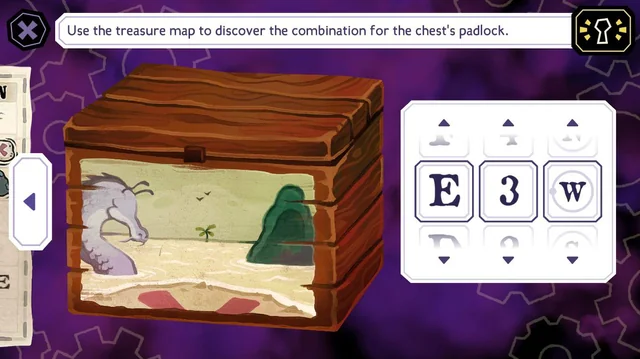
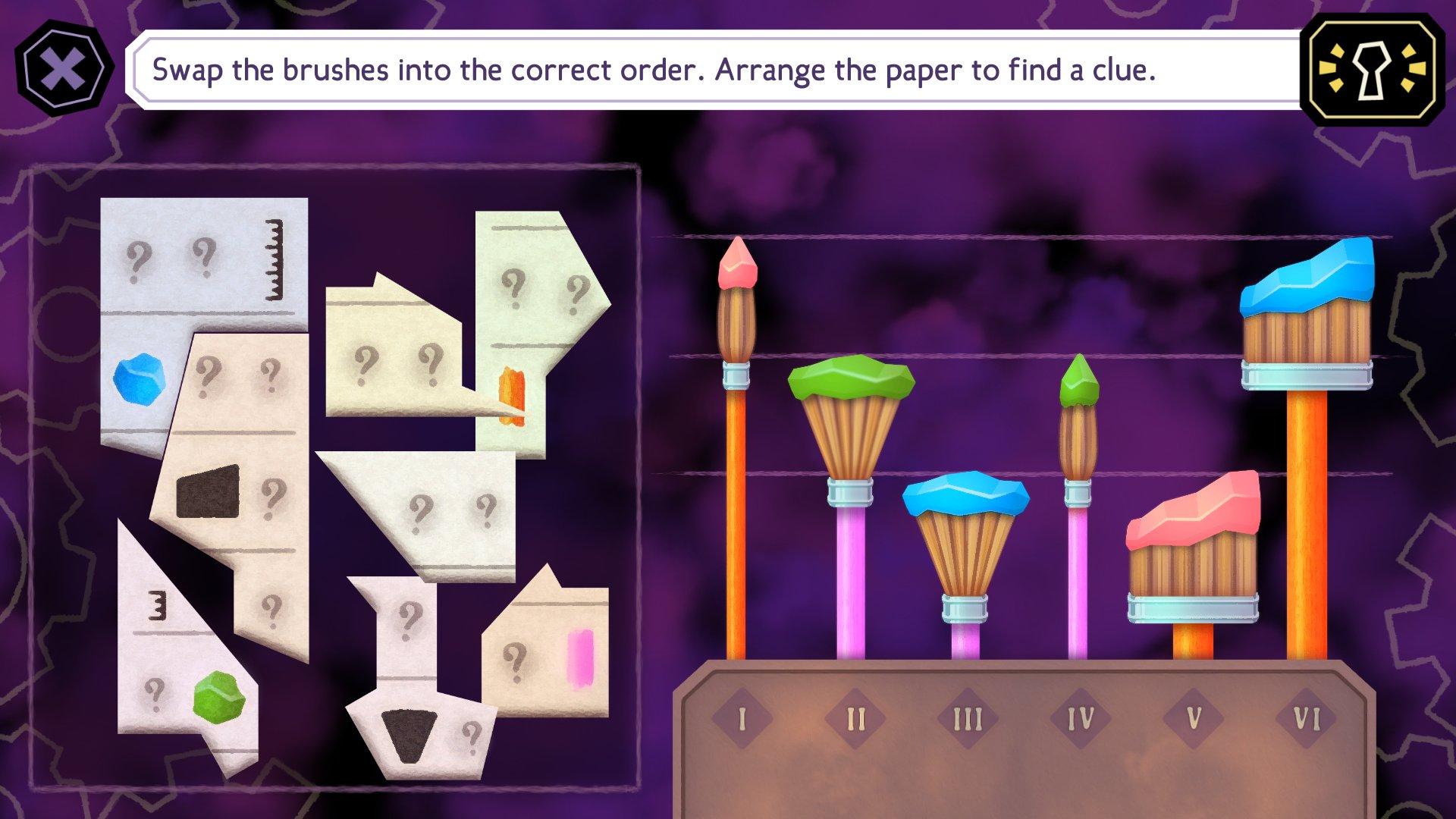 Fig 1 – puzzles embedded in the narratives
Fig 1 – puzzles embedded in the narratives
The dialogue choices with other characters are also a key mechanic. Each interaction reveals personality traits and backstories, enriching the narrative. For example, as shown in Fig 3 questioning a character about a seemingly unrelated painting in the background can unexpectedly uncover their relationship with the victim, adding layers to the narrative. Fig 2 – Conversation without supporting the storytelling
Fig 2 – Conversation without supporting the storytelling
 Fig 3 – Conversation that supports and uncovers the story
Fig 3 – Conversation that supports and uncovers the story
The dynamics of the game are influenced by how players interact with the game environment. The setting, the Tower, controls the narrative flow through its architectural design, which physically segments parts of the story until players are ready to encounter them. The game uses embedded narrative as a storytelling approach where the narrative elements are integrated within the environment, allowing players to uncover the story interactively through exploration and discovery. As players solve puzzles, new areas of the tower unlock. Each room is designed to represent its inhabitant’s personality and secrets. For instance, entering a new room like Penny’s room(Fig 4) might reveal a character’s obsession with a certain aspect of the tower’s history, prompting a new line of inquiry.
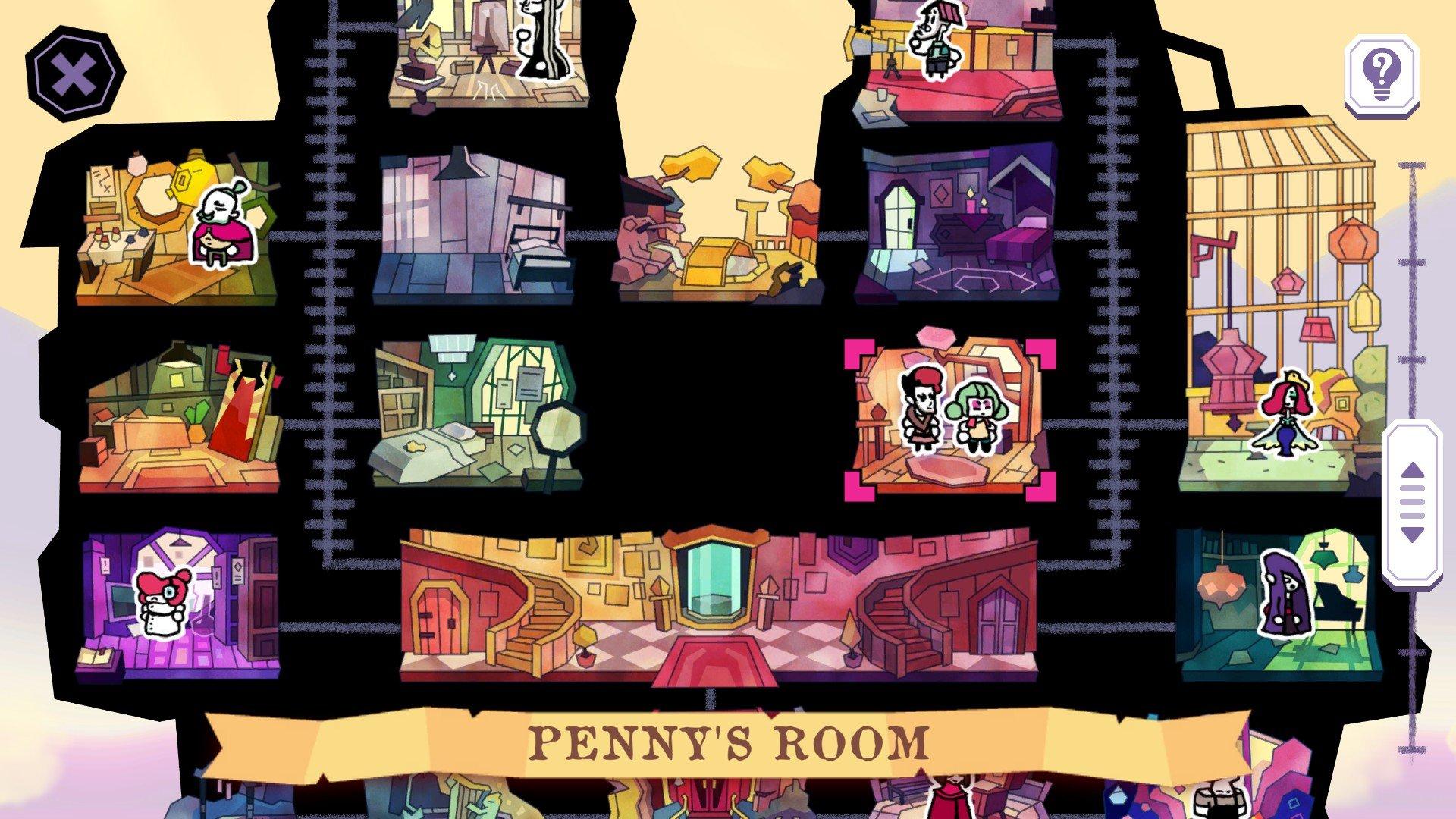 Fig 4 – Map of Penny’s room which reveals personal secrets
Fig 4 – Map of Penny’s room which reveals personal secrets
The game’s environment contains subtle visual clues that contribute to the narrative. Artwork, room decoration, and even the disrepair in some parts of the tower can hint at the family’s history and the events leading up to the central mystery.
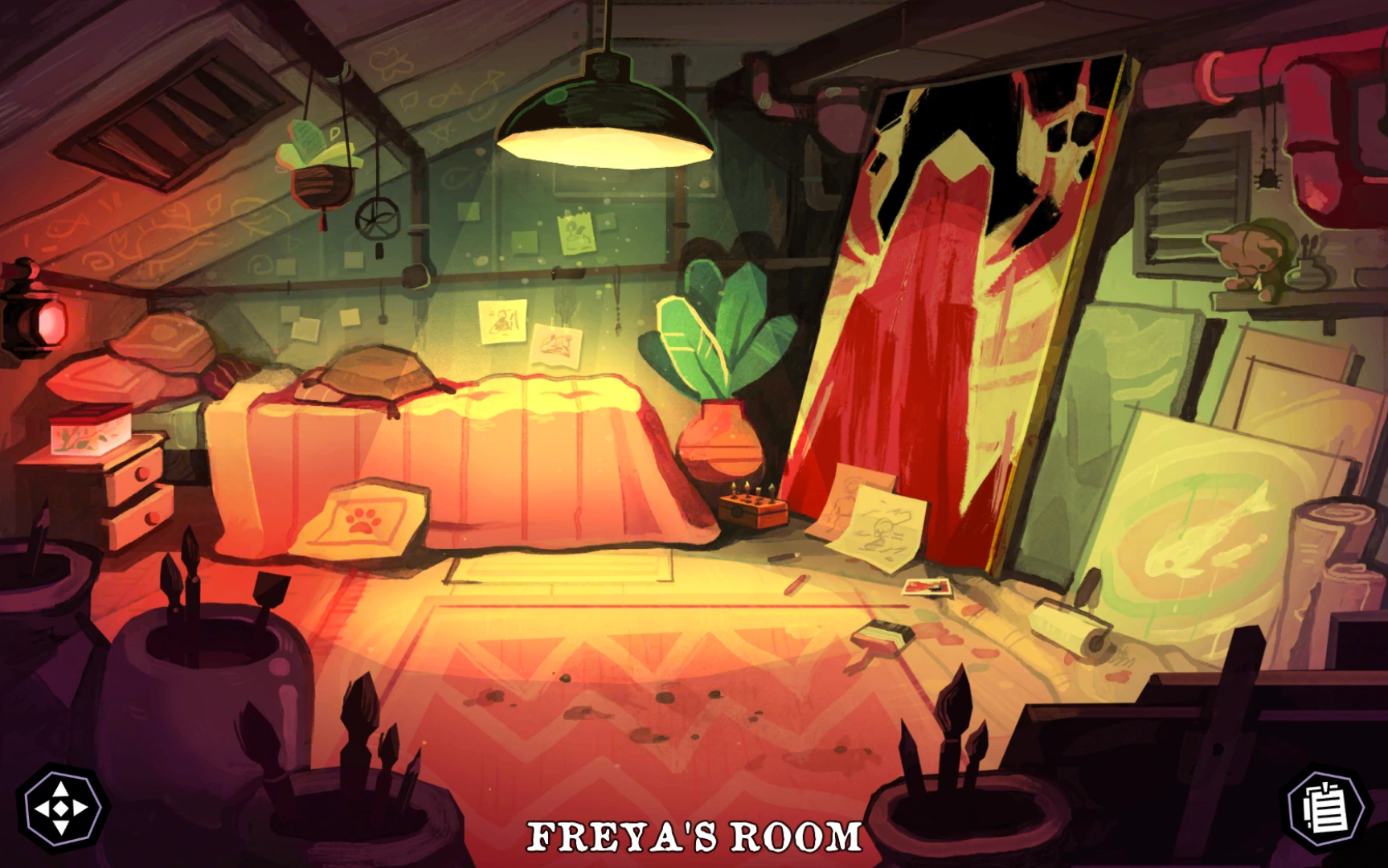
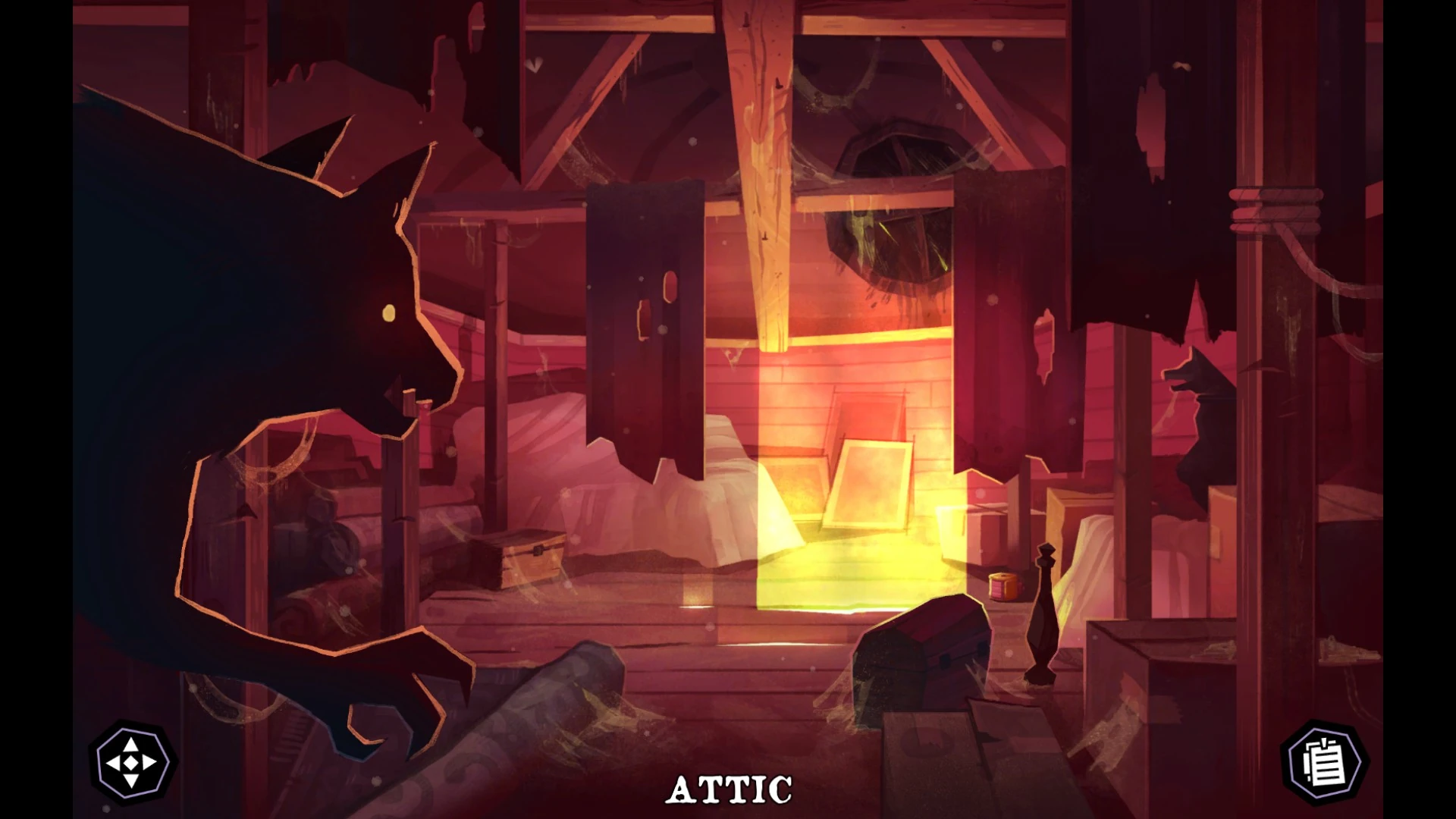 Fig 5/6 – visual environments
Fig 5/6 – visual environments
Tangle Tower’s aesthetics reinforce narrative loops and arcs and provide players with the fun of narrative, challenge, and discovery. The artwork and music set a tone that fluctuates with the mystery, enhancing the emotional landscape of the game. Certain themes or visuals recur throughout the game, such as the depiction of certain symbols or colors associated with the mystery. These loops help players make connections between different clues and character stories. Players often need to revisit locations with new knowledge or tools, uncovering new layers to the story that were not apparent on the first visit. This loop of revisiting enhances the depth of the narrative and discovery, making the investigation feel organic and realistic. Each character in Tangle Tower has a narrative arc that develops as players interact with them. For example, one of the characters Fifi starts off as a highly intelligent but socially detached young scientist, deeply immersed in her experiments as a means to navigate familial pressures and expectations. During the mystery revelation and climax, her interactions and personal discoveries reveal her motivations to protect a loved one, transforming her from a potential suspect to a more sympathetic and complex character. By the end of the game resolution, Fifi’s emotional growth and acceptance of her family’s dynamics signify her development from isolation to a meaningful engagement with those around her. These arcs are revealed through dialogue and the discovery of personal belongings, which help to paint a fuller picture of their motives and their relationship to the mystery(as shown in the figures below).
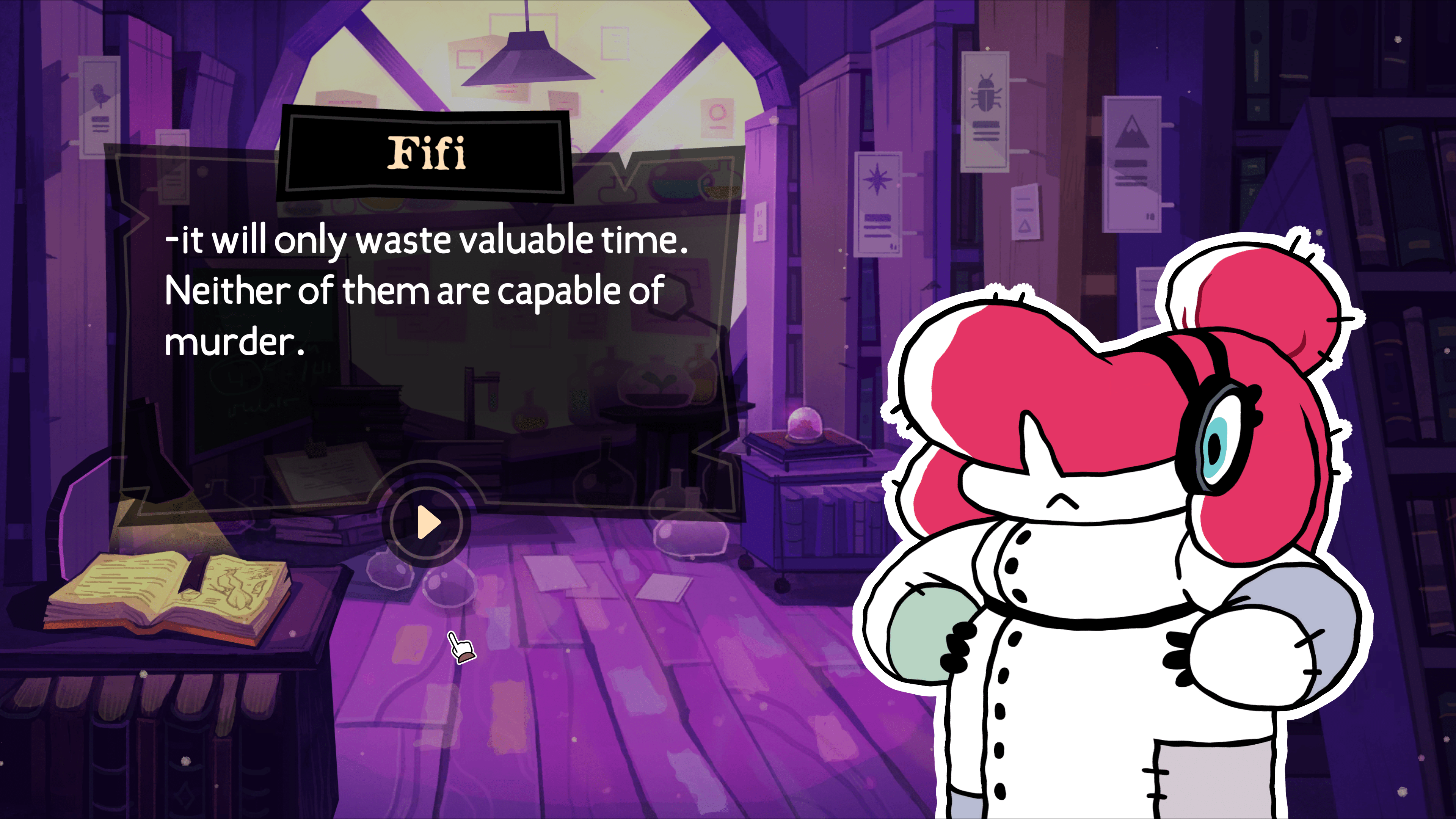

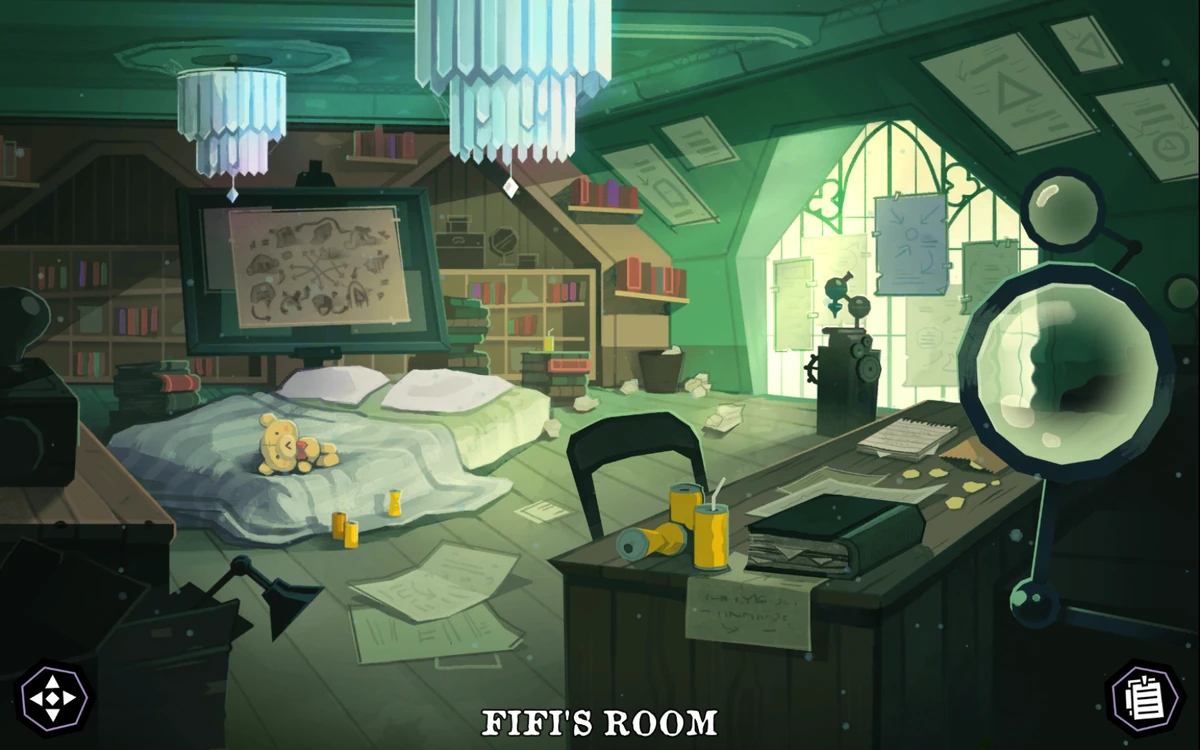 Fig 7/8/9 – methods for revealing Fifi’s story arc
Fig 7/8/9 – methods for revealing Fifi’s story arc
The overarching narrative arc is the resolution of the mystery itself. As players gather clues and solve challenging puzzles, the story builds toward a climax that reveals the culprit and their motives, tying together all the narrative threads in a coherent and satisfying conclusion.
In summary, the architecture of the setting actively controls the progression of the story, creating a dynamic interplay between the player’s actions and the unfolding mystery. Through the use of narrative loops and arcs, the game maintains engagement and provides a rich, layered storytelling experience that is both challenging and deeply satisfying guiding players through the mystery.



